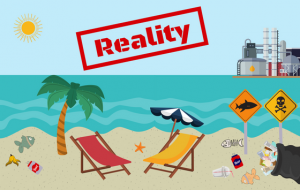If something sounds too good to be true, it probably is. That’s the unfortunate reality of 401(k) loans and free vacations getaways.
Both seem like a great deal until you do a little research.


When it comes to 401(k) loans, people often think ‘I’m just borrowing from my own savings and paying myself back the interest on the loan. No harm, no foul. Right?’
Wrong.
The reality is that borrowing against your 401(k) is a bad idea. Here are some of the key reasons why:
1. High application and maintenance fees for small-dollar loans
There are typically maintenance and application fees associated with 401(k) loans.
Most plans will charge a loan origination fee that is typically between $75 and $100, along with a $25 annual maintenance fee. That means on a $1,000 loan, you’re potentially paying 10% in fees before any interest is paid.
2. Paying after-tax dollars into a pre-tax plan = double taxation
Speaking of interest, you will also need to pay interest on a 401(k) loan, which is typically prime rate plus 1%. You’ll pay that interest back to yourself; however, you’ll do it with after-tax dollars. If you’re in a 25% tax bracket, a $10,000 loan with an interest rate of 5% mean you’ll have to earn $625 in pre-tax dollars to pay back the $500 in interest, which you’ll be taxed on again upon withdrawal at retirement age. Essentially, $125 is unnecessarily going to Uncle Sam.
3. 401(k) loans must be repaid shortly after employment termination
A Wharton School study found that about 40% of 401(k) savers borrow from their plan in a given five-year period.
Historically, 86% of those who change jobs with outstanding 401(k) loans failed to repay loans in the 60 days required by law [Wharton]. In 2018, Congress lengthened this repayment time, but the loan repayment schedule is still dramatically shortened from the loan’s original five-year repayment term.
4. Paused or limited contribution
Some 401(k) plans don’t allow participants to contribute to their 401(k) with an existing loan. Even if that isn’t the case, participants may reduce or completely eliminate contributions while repaying their loan. This can be especially damaging if there’s an employer matching program in place.
5. There’s a 10% federal tax penalty on defaulted loans
For participants under the age of 59½, hardship withdrawals and defaulted 401(k) loans are subject to a 10% federal tax penalty.
6. Loss of potential investment gains
The money borrowed is losing all investment gains, which often can be larger than the interest on the loan itself. Because of the power of compounding interest, the younger you are when taking a loan, the greater the loss of investment gains.
Using market averages, a $10,000 loan repaid in five years would cost you $2,474.39 in lost investment gains earnings. That might not seem like a big deal, until you account for power of compound interest.
Over the course of 30 years, that $10,000 401(k) loan could cost you $24,898.94 in future earnings.
That’s a lot of nice beach vacations!
Here’s the ugliest truth of all…
When financial hardships strike and employees don’t have liquid savings, they will turn to whatever avenue they can to access the funds necessary. Often times, the only low-cost option available is their 401(k).
It’s important for employers to provide employees with alternative sources of low-cost loans, like Kashable, which can help to keep retirement funds where they belong – in savings.
Want to Reduce Employee 401(k) Loans?
Kashable provides employees with a better way to tackle costly debt and unexpected expenses during times of financial hardship.
By working with employers, we can offer employees across the credit spectrum a low-cost alternative to 401(k) loans, credit cards, and pay advances. We only lend what employees can afford to borrow, with loans that are repaid automatically through payroll. Kashable is Socially Responsible Credit™
Calculation Assumptions
Let’s say you take a $10,000 loan from your 401(k) and you’re 30 years away from retirement.
You pay off the loan in 5 years at an interest rate of Prime + 1, which happens to be 5.75% APY (based on 2018 bank prime). At the end of the loan term, you would owe $3,225.19 in total interest. Even though you’re paying yourself back the interest, you’re doing so with after tax dollars (25% income tax bracket) that will be double-taxed. Now tack on $200 in loan fees. You’re really paying yourself back $2,218.89.
If you had left the $10,000 to grow in your 401(k) account during that 5 year period, at a rate of 8% APY, you would’ve earned $4,693.28 on that investment. Even if you offset the loss with the $2,218.89 you pay yourself back in interest, you would have a lost investment opportunity of $2,474.39 over those 5 years. That might not sound like much, until you understand the power of compound interest. The $2,474.39 in lost investment gains would’ve compounded to be worth $24,898.94 over the course of 30 years.

